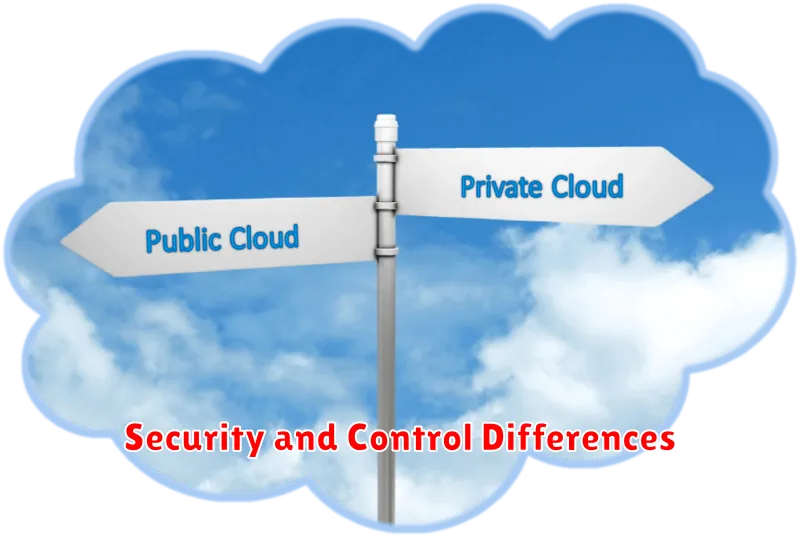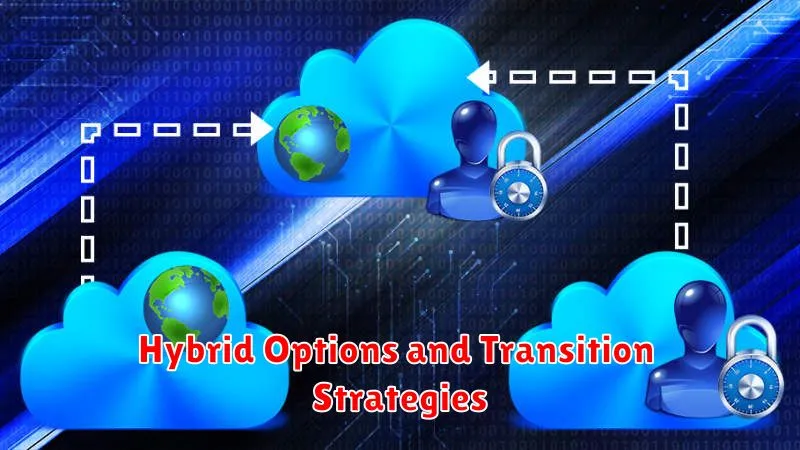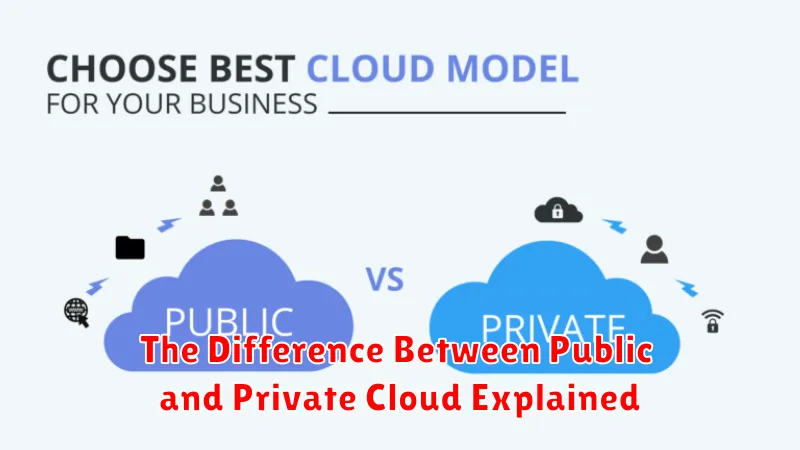Understanding the nuances between public cloud and private cloud is crucial for businesses seeking to leverage cloud computing’s transformative potential. This article delves into the core distinctions between these two cloud deployment models, exploring their respective advantages, disadvantages, and ideal use cases. We will examine the key features of public clouds, often offered by major providers like Amazon Web Services (AWS), Microsoft Azure, and Google Cloud Platform (GCP), and contrast them with the characteristics of private clouds, which provide dedicated, isolated environments for individual organizations. By clarifying the differences between public and private cloud infrastructures, you can make informed decisions regarding the best cloud solution for your specific business requirements.
Selecting the right cloud environment – whether public, private, or even a hybrid approach – depends heavily on factors such as security needs, compliance regulations, budget constraints, and desired levels of control. This article will help you navigate the complexities of choosing between a public cloud and a private cloud by breaking down the core differences in their architecture, management, security protocols, and cost structures. Whether you are seeking the scalability and cost-effectiveness of a public cloud or the enhanced security and control of a private cloud, understanding the key distinctions is paramount. This comparison will empower you to make strategic decisions about your cloud strategy and optimize your IT infrastructure for maximum efficiency and performance.
What Is a Public Cloud?
A public cloud is a cloud computing model where computing services like servers, storage, databases, networking, software, analytics, and intelligence are owned and managed by a third-party cloud provider. These services are delivered over the internet, making them accessible to anyone who wants to use or purchase them.
In a public cloud, all the underlying infrastructure, like hardware and software, is owned, managed, and maintained by the cloud provider. Users access these services via an account and interface, typically through a web browser. Multi-tenancy is a key characteristic, meaning that multiple users or organizations share the same underlying infrastructure, although their data and applications are logically separated and secure.
Public clouds offer several advantages, including scalability, cost-effectiveness, and reliability. Resources can be scaled up or down quickly and easily based on demand, and users only pay for the resources they consume. The cloud provider is responsible for maintaining the infrastructure and ensuring its availability, reducing the burden on individual users.
What Is a Private Cloud?
A private cloud is a cloud computing model that provides dedicated computing resources to a single organization. Unlike a public cloud, which shares resources among multiple users, a private cloud’s infrastructure is exclusively used by one client. This provides greater control over data, security, and customization.
Private clouds can be physically located on-premises within an organization’s data center. Alternatively, they can be hosted by a third-party provider. Regardless of location, the key differentiator is the isolation of resources and the enhanced level of privacy it offers.
Organizations often choose private clouds for workloads that require stringent security measures, compliance with specific regulations, or a high degree of customization. It gives them the flexibility to tailor the cloud environment to their specific needs while maintaining full control over their infrastructure.
Performance and Accessibility Comparison
Performance differences between public and private clouds depend heavily on the specific implementation and workload. Public clouds offer readily available scalability, allowing for rapid adjustments to resource allocation. However, shared resources can sometimes lead to unpredictable performance fluctuations. Private clouds, with their dedicated resources, often provide more consistent performance, particularly for sensitive applications. Careful planning and resource management are crucial in both environments to optimize performance.
Accessibility varies significantly between the two cloud models. Public clouds are accessed via the internet and offer high availability from virtually anywhere. Private clouds, residing within an organization’s internal network, provide enhanced security and control over access. This restricted access can, however, limit accessibility for remote users or those outside the organization’s network. The choice between public and private cloud depends on the specific accessibility requirements of the organization and its applications.
Security and Control Differences

A key distinction between public and private cloud lies in security and control. With public cloud, the provider manages the underlying infrastructure and security, offering a standardized approach. This can be advantageous for organizations lacking extensive in-house security expertise. However, it also means less direct control over security configurations.
Private cloud, in contrast, gives organizations significantly greater control. Because the infrastructure is dedicated solely to the organization, it allows for customized security measures tailored to specific needs and compliance requirements. This heightened control comes with the responsibility of managing the entire infrastructure and security stack.
Cost and Resource Allocation
A key difference between public and private clouds lies in their cost structures and resource allocation models. Public clouds operate on a pay-as-you-go model, offering scalability and flexibility. Users only pay for the resources they consume, eliminating the need for large upfront investments in hardware and infrastructure. This makes public clouds a cost-effective solution for organizations with fluctuating workloads or limited budgets.
Private clouds, conversely, require significant upfront investment for hardware, software, and personnel. While offering greater control and security, private clouds entail ongoing maintenance costs. Resource allocation in a private cloud is typically fixed, meaning resources are dedicated to specific tasks and may not be readily scalable to meet unexpected demand spikes. This can lead to either underutilization of resources or performance bottlenecks.
Which One Suits Your Business?
Choosing between public and private cloud depends heavily on your specific business needs and priorities. Consider the following factors to determine the best fit.
Security: If your business handles highly sensitive data, a private cloud offers greater control and security customization. Public clouds, while generally secure, share resources with other users.
Compliance: Stringent regulatory requirements, like HIPAA or GDPR, may necessitate the dedicated resources and control provided by a private cloud.
Cost: Public clouds typically offer a more cost-effective solution, especially for smaller businesses or those with fluctuating workloads. Private clouds require upfront investment in infrastructure.
Scalability: Both public and private clouds offer scalability, but public clouds generally provide more rapid and on-demand scaling capabilities. Private clouds require planning and potential hardware upgrades for scaling.
Control and Customization: Private clouds provide greater control over the environment and allow for extensive customization. Public clouds offer less customization due to their shared nature.
By carefully evaluating these factors against your business requirements, you can make an informed decision on which cloud deployment model aligns best with your needs.
Hybrid Options and Transition Strategies

Organizations don’t always have to choose strictly between public and private cloud solutions. Hybrid cloud deployments offer a flexible approach, combining the strengths of both. This allows businesses to maintain sensitive data on a private cloud while leveraging the scalability and cost-effectiveness of a public cloud for other workloads.
Several transition strategies facilitate a smooth migration to a hybrid environment. A common approach is a phased migration, gradually moving workloads to the cloud based on factors like security needs and application compatibility. Another strategy involves using the public cloud as an overflow resource for peak demand periods, keeping the majority of operations on the private cloud.
Choosing the right hybrid strategy depends on specific business requirements. Factors to consider include existing infrastructure, compliance regulations, budget constraints, and the technical expertise available within the organization. Careful planning and assessment are crucial for a successful hybrid cloud implementation.

